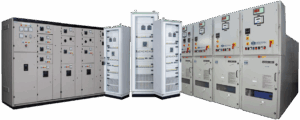Are you stuck with metal parts that just don’t quite measure up-literally? Maybe you’re tired of wasting material, fighting with tool wear, or running into the same design limitations every time you try to innovate. If you’re in aerospace, medical devices, electronics, or any industry where “close enough” just won’t cut it, you’re probably searching for a smarter way to build. That’s where an electroforming solution comes in. This isn’t just another manufacturing trend; it’s a precision-driven, additive process that lets you create metal parts with complexity and accuracy that traditional machining can only dream of.
Electroforming is all about finesse, not force. Instead of carving away at a block of metal, you’re building your part atom by atom. The result? Ultra-thin walls, sharp undercuts, and complex geometries that are almost impossible to achieve any other way. Even better, you only use the metal you need, so there’s minimal waste-good for your bottom line and the planet. No wonder the global market for electroplating and electroforming solutions is booming, with a value topping $15 billion in 2023 and expected to reach $20.3 billion by 2030.
So, how does it actually work?
You start with a mandrel shaped exactly like your finished part. If it’s not already conductive, you give it a thin conductive coating. After a meticulous cleaning (think: no dust, no oil, no excuses), the mandrel goes into an electrolyte bath filled with metal ions-nickel, copper, gold, you name it. Apply an electric current, and those metal ions start depositing onto the mandrel’s surface. Layer by layer, you build up the metal until you’ve got the thickness you want. Then, just remove the mandrel, and voilà: a metal part that’s a perfect replica, down to every last detail.
Electroforming can deliver tolerances within a few micrometers and surface finishes so smooth you’ll often skip secondary polishing altogether. It’s cost-efficient for both prototyping and full-scale production, thanks to reusable tooling and minimal post-processing. Here’s why more manufacturers are making the switch:
- Complex Geometries: Intricate shapes, sharp corners, and thin walls are easy to achieve.
- Material Purity: Electroformed metals are harder, more flexible, and better conductors due to their high purity.
- Uniform Thickness: Consistent layer thickness means reliable performance and structural integrity.
- Lightweight Strength: Thin-walled components reduce weight without sacrificing durability-a must for aerospace and automotive.
- Customization: Tweak plating conditions to tailor hardness, ductility, and tensile strength for your needs.
- Minimal Waste: Only the metal you need is used, supporting sustainability goals.
It’s no wonder electroforming is the go-to for medical stents, MEMS, microfilters, and even high-end jewelry.
Sulfamate Nickel Plating Solution: The Unsung Hero of Durability and Machinability
Now, let’s turn our attention towards- sulfamate nickel plating solution– popular with anyone who demands both toughness and flexibility. Why is it such a big deal? For starters, sulfamate nickel deposits are 99.9% pure nickel, delivering superior corrosion resistance, high tensile strength, and minimal internal stress. That means your parts are less likely to crack or warp, even after machining or bending.
Here’s where sulfamate nickel plating really stands out:
- Machinability: Unlike many coatings, sulfamate nickel is easy to cut, drill, or machine-perfect for parts that need post-plating tweaks.
- Thermal & Corrosion Resistance: It can handle temperatures up to 1,400°C and shrugs off harsh chemicals, making it ideal for food processing, aerospace, and electronics.
- Repair & Restoration: It’s great for rebuilding worn shafts, molds, or rollers, saving you from costly replacements.
- Cost & Speed: More affordable than many specialty coatings, and it supports high-speed plating for faster turnaround.
- Versatility: Used as a base for gold, silver, or tin plating, and excels in joining applications like soldering, brazing, and welding.
Industry experts note that sulfamate nickel-plated parts can last up to three times longer in corrosive environments compared to uncoated ones. Plus, it’s compliant with major specs like MIL-P-27418 and AMS 2424, so you know you’re getting reliability (Electro-Coatings).
Who’s Benefiting Most from These Advances?
- Aerospace: Lightweight, heat-resistant parts for turbines and sensors.
- Medical Devices: Smooth, biocompatible surfaces for stents and catheters.
- Electronics: High-conductivity, precision components for PCBs and MEMS.
- Food Processing: Durable, easy-to-clean surfaces for safety and hygiene.
- Automotive & Industrial: Restoration and repair of high-wear parts without costly replacements.
What’s Next for Electroforming?
The future’s looking bright-and fast:
- Hybrid manufacturing: Pairing electroforming with 3D-printed mandrels for rapid prototyping.
- Nano-additives: Boosting hardness, wear resistance, and conductivity.
- Automation: Smarter controls are slashing cycle times and improving consistency.
Final Thoughts
Electroforming solution technology-especially when paired with sulfamate nickel plating solution-isn’t just a niche process anymore. It’s the backbone of precision manufacturing for companies that can’t afford to compromise on quality or reliability. If you are interested and wish to know more, do feel free to connect with the experts at DisChem Inc.






